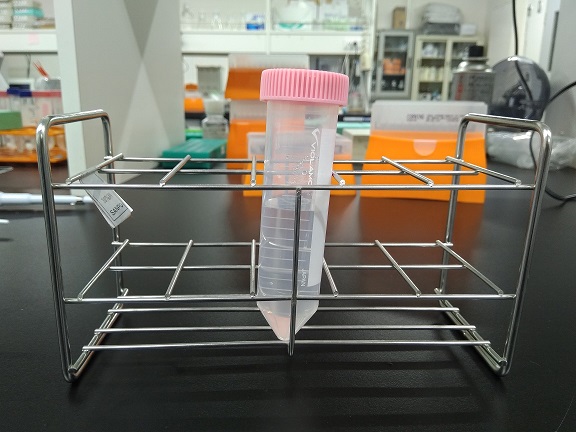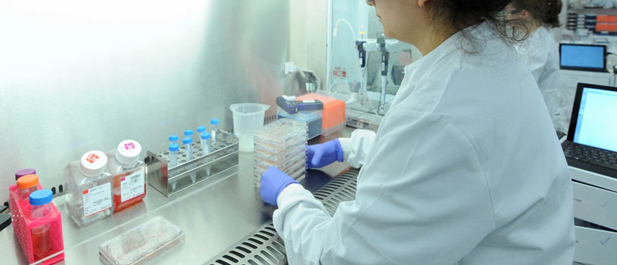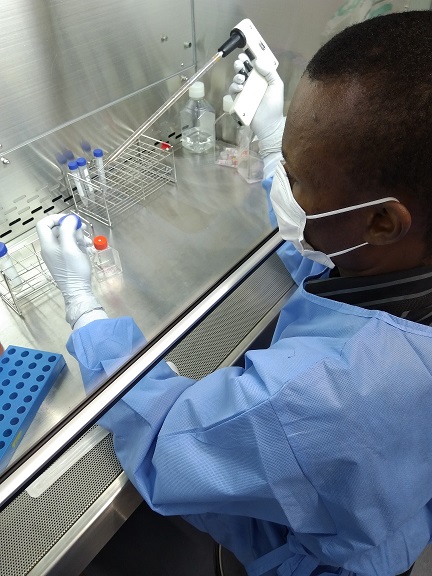In the cell culture laboratory, there are many cell culture techniques that are routinely engaged or carried out. These various types of cell culture techniques are shown below:
- Primary cell culture: These are cells obtained directly from an organism and are directly plated in a cell culture dish or flask. They comprise cells of a tissue or organ obtained from an organism and immediately transferred to a suitable cell culture environment conducive for growth. Such cells will attach to the medium, divide and grow exponentially. They are generally termed primary cell cultures. Primary cell cultures have a limited life span. They will only last for a short period of time (usually days to weeks).
Their only advantage is that they may exhibit some physiological behaviour similar to that obtainable in vivo because they are freshly isolated cells. Primary cell cultures are usually unstable and require some time to adapt to the in vitro environment they are introduced to. In addition, some cells in primary cell culture may sustain injury during their isolation and preparation, and thus eventually die in the process. In primary cell cultures, a series of enzymatic and mechanical disruptions of the tissues or organs and selection steps are usually employed to isolate the cells of interest from a heterogeneous population of cells.
Some examples of primary cell cultures or cell lines includes: macrophages, natural killer (NK) cells, B and T cells, dendritic cells and cells of the spleen (splenocytes). These cells are all cells of the immune system. They are used in primary cell cultures to decode the effects of some certain substances (e.g. drugs) on the functions and proliferation of cells of the immune system.
- Secondary cell culture: These are cells taken from a primary cell culture and are passaged (or subcultured) into a new and fresh cell culture flask/disk containing new growth medium. Passaging which can also be referred to as sub-culturing is the transplantation of cells from one cell culture vessel to another. Passaging gives cells the chance to expand and increase in population. A higher cell growth is usually achieved due to the addition of fresh growth medium and the introduction of other environmental conditions.
Normally, the number of cells obtained from a primary cell culture are may not be enough to create sufficient cells required for a graft, and this warrant the need for Passaging of cells obtainable in secondary cell culture. Secondary cell cultures are transformed and immortalized cell lines with infinite growth and proliferation capacity. They are usually derived from human carcinomas/tumours. Such cells have been transformed in the sense that they have lost sensitivity to factors associated with growth control and thus can grow unlimited.
Secondary cell cultures are more easily cultured than the primary cell cultures. Some sources of secondary cell cultures include: embryos and tumours or transformed cells such as HeLa cells and Chinese hamster ovary (CHO). Secondary cell culture has applications in a range of areas such as in vaccine production and drug screening.
- Suspension cell cultures: These are cells that grow freely and unattached to any surface. Such cells are cultured in suspensions of growth medium. They are maintained in a cell culture flask without any adherence to any surface. Examples of cells cultured in suspension include the cells of the blood such as hematopoietic cells. Such cells are engineered to grow in suspensions. They grow in a very much higher proportion.
- Adherent cell cultures: These are cells that attach or adhere to the surfaces of the cell culture flask used for their culturing. They are referred to as anchorage-dependent cells. These cells are cultivated in suitable growth medium that is specially suited and treated to allow adhesion and the spreading of the cells. The cell culture flask used for adherent cells are usually coated with materials that increase their adherence features and provide signals needed for their growth and proliferation in the cell culture medium.
References
Alberts B, Bray D, Johnson A, Lewis J, Raff M, Roberts K andWalter P (1998). Essential Cell Biology: An Introduction to the Molecular Biology of the Cell. Third edition. Garland Publishing Inc., New York.
Alberts B, Bray D, Lewis J, Raff M, Roberts K and Watson J.D (2002). The molecular Biology of the Cell. Fourth edition. New York, Garland, USA.
Ausubel, F.M., Brent, R., Kingston, R.E., Moore, D.D., Seidman, J.G., Smith, J.A., Struhl, K., eds (2002). Short Protocols in Molecular Biology, 5th edn. John Wiley & Sons, New York.
Caputo J.L (1996). Safety Procedures. In: Freshney, R.I., Freshney, M.G., eds., Culture of Immortalized Cells. New York, Wiley-Liss, Pp. 25-51.
Cooper G.M and Hausman R.E (2004). The cell: A Molecular Approach. Third edition. ASM Press.
Davis J.M (2002). Basic Cell Culture, A Practical Approach. Oxford University Press, Oxford, UK.
Freshney R.I (2005). Culture of Animal Cells, a Manual of Basic Technique, 5th Ed. Hoboken NJ, John Wiley and Sons Publishers.
Health Services Advisory Committee (HSAC) (2003). Safe Working and the Prevention of Infection in Clinical Laboratories. HSE Books: Sudbury
Lodish H, Berk A, Matsudaira P, Kaiser C.A, Kreiger M, Scott M.P, Zipursky S.L and Darnell J (2004). Molecular Cell Biology. Fifth edition. Scientific American Books, Freeman, New York, USA.
Marcovic O and Marcovic N (1998). Cell cross-contamination in cell cultures: the silent and neglected danger. In Vitro Cell Dev Biol. 34:108.
Mather J and Barnes D (1998). Animal cell culture methods, Methods in cell biology. 2rd eds, Academic press, San Diego.
Verma P.S and Agarwal V.K (2011). Cytology: Cell Biology and Molecular Biology. Fourth edition. S. Chand and Company Ltd, Ram Nagar, New Delhi, India.
Discover more from Microbiology Class
Subscribe to get the latest posts sent to your email.





